Don't wanna be here? Send us removal request.
Text
Orange Cap in IPL
Orange Cap in IPL

Orange Cap in IPL: IPL 2023 has begun and the top scorers from around the world have already started smashing good runs from their bats. The top scorer from any IPL season becomes an Orange cap winner. The orange cap is dedicated to players that score the most runs in a single IPL season.
Orange cap winner prize money: Top scorer from a single IPL season (Orange cap winner) is awarded Rs 15 lakh at the end of the IPL season. Players with the most wickets in an IPL season are also rewarded with the “Purple Cap” title.
We will now discuss the orange cap winners in the history of IPL. Indian Premier League began in 2008 and in that season Shaun Marsh earned the title of Orange Cap winner by scoring 616 runs for his team Kings XI Punjab. IPL 2022 orange cap winner Jos Butler holds the title for top scorer in IPL history with 863 runs for Rajasthan Royals. However, Rajasthan didn’t win the IPL 2022 title as they faced defeat by Gujrat Titans.
Orange Cap in IPL List (2008-2013)
Orange Cap Winner 2008: Shaun Marsh- 616 Runs
Australian Batsman Shaun Marsh became the orange cap winner in IPL 2008 by scoring 616 runs in just 11 innings. He scored a total of 2477 runs in his IPL career but never managed to break his record for most runs in a single IPL season of 616 runs. Shaun Marsh smashed his highest score of 115 runs in just 69 balls against Rajasthan Royals in the 56th match of IPL 2008.Season2008TeamKings XI PunjabInnings11Runs616Highest115Average68.44Strike Rate139.6850 / 1005 / 14s / 6s59 / 26
Orange Cap Winner 2009: Matthew Hayden- 572 runs
Matthew Hayden became the second consecutive Australian Cricketer to win the title of the orange cap in IPL 2009 by scoring 572 runs in 12 innings. He scored 5 fifty’s but didn’t score any century in the IPL 2008. Hayden played in a total of 3 IPL seasons and scored 1107 runs during his IPL career.Season2009TeamChennai Super KingsInnings12Runs572Highest89Average52.00Strike Rate144.8150 / 1005 / 04s / 6s60 / 22
Orange Cap Winner 2010: Sachin Tendulkar- 618 Runs
Indian cricketer also known as the “God of Cricket” Sachin Tendulkar became the first Indian to win an orange cap in IPL 2010 after scoring 618 runs for Mumbai Indians. Sachin’s good performance lead Mumbai Indians to the finals of IPL 2010 where Sachin scored the most runs for his team (48 runs). However, the team faced defeat and Chennai Super Kings lifted the IPL 2010 trophy.Season2010TeamMumbai IndiansInnings15Runs618Highest89*Average47.53Strike Rate132.6150 / 1005 / 04s / 6s86 / 3
Orange Cap Winner 2011: Chris Gayle- 608 Runs
Chris Gayle unexpectedly went unsold for the IPL 2011 season. Gayle later took part in the IPL tournament as a substitute for Dirk Nance and became the show-stealer as he scored the most runs in IPL 2011 (608 runs) and earned an orange cap in IPL 2011.
Chris Gayle was the star performer of this season as he also hooked two centuries in IPL 2011. Chris Gayle is known for his aggressive batting style and he secured his title by hitting the most sixes in IPL in 2011 (44 SIXES).Season2011TeamRoyal Challengers BangaloreInnings12Runs608Highest107Average67.55Strike Rate183.1350 / 1003 / 24s / 657 / 44
Orange Cap Winner 2012: Chris Gayle- 733 Runs
Chris Gayle scored 733 runs in the IPL 2012 to become the top scorer of the season. He is the only player in the IPL history to win the orange cap title consecutively. Gayle scored 733 runs this season with an astonishing average of 61.08. The Caribbean star was at his peak at this time as he scored more than 600 runs in three IPL seasons consecutively from 2011-2013.Season2012TeamRoyal Challengers BangaloreInnings14Runs733Highest128*Average61.08Strike Rate160.7450 / 1007 / 14s / 6s46 / 59
Also Read: Players with Most Sixes in the History of IPL!!
Orange Cap Winner 2013: Michael Hussey- 733 Runs
Michael Hussey became the third Australian player to achieve the orange cap title after scoring 733 runs for CSK. Orange Cap 2012 winner Mike Hussey also made six half-centuries in the IPL 2013 for his team.
Interesting fact: IPL comes with lots of unpredictability and here’s one more point to add to it Top IPL scorers from IPL 2012 and IPL 2013 scored the same number of runs (733 Runs).Season2013TeamChennai Super KingsInnings17Runs733Highest95Average52.35Strike Rate129.5050 / 1006 / 04s / 6s81 / 17
Orange Cap Winner 2014: Robin Uthappa- 660 Runs
Robin Uthappa scored 660 runs in 16 innings and attained the orange cap in IPL 2014. This was the only season when Uthappa managed to score more than 600 runs. Otherwise, his second-highest total in an IPL season was the 434 runs that he scored in IPL 2013.Season2014TeamKolkata Knight RidersInnings16Runs660Highest83*Average44.00Strike Rate137.7850 / 1005 / 04s / 6s74 / 18
Orange Cap Winner 2015: David Warner- 562 Runs
David Warner became the top scorer in IPL 2015 with 562 runs in 14 innings. Warner won the orange cap in IPL 2015 after becoming the top scorer of the season. He smashed 7 half-centuries during IPL 2015 including his highest score of 91 runs from that season.Season2015TeamSunrisers HyderabadInnings14Runs562Highest91Average43.23Strike Rate156.5450 / 1007 / 04s / 6s65 / 21
Orange Cap Winner 2016: Virat Kohli- 973 Runs
Virat Kohli scored 973 runs in IPL 2016 and earned the orange cap winner title in 2015. Kohli made several records this year including the most runs by an individual in a single IPL season. He also scored 4 centuries this year making him the first player to do so in IPL history. Virat Kohli also holds the record for maintaining the highest average of 81.08 in the IPL record.Season2016TeamRoyal Challengers BangaloreInnings16Runs973Highest113Average81.08Strike Rate152.0350 / 1007 / 44s / 6s83 / 38
Also Read: Check Out the List of IPL 2023 Most Expensive Players: Virat Kohli Out of the List!!
Orange Cap Winner 2017: David Warner- 641 Runs
David Warner earned the orange cap for the second time in IPL history after scoring 641 runs in IPL 2017. 2017 Orange Cap winner David Warner took his team Sunrisers Hyderabad to the eliminator round where the team got defeated by KKR and ended in the 4th position this season.
Interesting fact: SRH managed to take both the titles (orange cap and purple cap) in IPL 2017 as David Warner won the orange cap for scoring the most runs (641 runs) and Bhubaneshwar Kumar won the purple cap for taking the most wickets (26 wickets) in this season.Season2017TeamSunrisers HyderabadInnings14Runs641Highest126Average58.27Strike Rate141.8150 / 1004 / 14s / 6s63 / 26
Orange Cap Winner 2018: Kane Williamson- 735 Runs
Kane Williamson scored 735 runs in 17 innings in the IPL 2018 and became the highest run scorer this season. Kane Williamson became the orange cap winner in IPL 2018. Kane Williamson led his team Sunrisers Hyderabad in IPL 2018 and took it to the finals where they lost to Chennai Super Kings.Season2018TeamSunrisers HyderabadInnings17Runs735Highest84Average52.50Strike Rate142.4450 / 1008 / 04s / 6s64 / 28
Orange Cap Winner 2019: David Warner- 692 Runs
Australian cricket star opener David Warner played excellently through the IPL 2018 and become the top run-scorer this season. David Warner scored 692 runs for SRH in IPL 2018 and became the most eligible player for the orange cap in IPL 2018. He scored 8 half-centuries and one century this season.
Interesting Fact: David Warner earned the orange cap title for the third time in IPL 2018 and became the player with the most orange cap titles (3).Season2019TeamSunrisers HyderabadInnings12Runs692Highest100*Average69.20Strike Rate143.8750 / 1008 / 14s / 6s57 / 21
Orange Cap Winner 2020: KL Rahul- 670 Runs
KL Rahul played his best knocks in the IPL 2020 and scored a total of 670 runs and became the top run scorer of the season. KL Rahul achieved the orange cap in IPL 2018 after scoring 670 runs in 14 innings for his team Kings XI Punjab.
KL Rahul smashed his highest score of 132 runs in IPL 2018 against RCB. With this score, he broke the record for the most runs by an Indian player in IPL. He also broke the record for most runs by a captain in an IPL match.Season2020TeamPunjab KingsInnings14Runs670Highest132*Average55.83Strike Rate129.3450 / 1005 / 14s / 6s58 / 23
Orange Cap Winner 2021: Ruturaj Gaikwad- 635 Runs
Indian Cricketer Rituraj Gaikwad became the youngest player to attain the title of orange cap winner in 2021 after scoring 635 runs in the IPL 2021 season. He also smashed his first IPL century (101*) in 2021 which counts as his highest score IPL until now. Ruturaj Gaikwad earned a great reputation in 2021 for which his team CSK retained him for Rs 6 crore ahead of IPL 2022.Season2021TeamChennai Super KingsInnings16Runs635Highest101*Average45.35Strike Rate136.2650 / 1004 / 14s / 6s64 / 23
Orange Cap Winner 2022: Jos Butler- 863 Runs
Jos Buttler is known for his explosive cricketing shots some of which helped him acquire an orange cap in 2022 after scoring 863 runs in 17 innings for Rajasthan Royals. In this season, he also scored four centuries paralleling Virat Kohli for hitting the most centuries in an IPL season. Jos Butler led Rajasthan Royals to the finals in IPL 2022 where they lost the title to Gujrat Titans. RR retained Jos Buttler for 10 crores in 2023.Season2022TeamRajasthan RoyalInnings17Runs863Highest116Average57.53Strike Rate149.0550 / 1004 / 44s / 6s83 / 45
Orange Cap 2023
The 16th edition of IPL 2023 began on March 31 and only a few matches have been played until now. Ruturaj Gaikwad holds the orange cap in IPL 2023 title after scoring 149 runs in two innings of which he scored 92 runs during the IPL 2023 inaugural match against Gujarat Lions. Ruturaj is followed by Kyle Mayers (126 runs) in 2nd position and David Warner (93 runs) in 3rd position. (This record is based on stats up to 5 April 2023).
Orange Cap in IPL: IPL 2023 has begun and the top scorers from around the world have already started smashing good runs from their bats. The top scorer from any IPL season becomes an Orange cap winner. The orange cap is dedicated to players that score the most runs in a single IPL season.
Orange cap winner prize money: Top scorer from a single IPL season (Orange cap winner) is awarded Rs 15 lakh at the end of the IPL season. Players with the most wickets in an IPL season are also rewarded with the “Purple Cap” title.
We will now discuss the orange cap winners in the history of IPL. Indian Premier League began in 2008 and in that season Shaun Marsh earned the title of Orange Cap winner by scoring 616 runs for his team Kings XI Punjab. IPL 2022 orange cap winner Jos Butler holds the title for top scorer in IPL history with 863 runs for Rajasthan Royals. However, Rajasthan didn’t win the IPL 2022 title as they faced defeat by Gujrat Titans.
Orange Cap in IPL List (2008-2013)
Orange Cap Winner 2008: Shaun Marsh- 616 Runs
Australian Batsman Shaun Marsh became the orange cap winner in IPL 2008 by scoring 616 runs in just 11 innings. He scored a total of 2477 runs in his IPL career but never managed to break his record for most runs in a single IPL season of 616 runs. Shaun Marsh smashed his highest score of 115 runs in just 69 balls against Rajasthan Royals in the 56th match of IPL 2008.Season2008TeamKings XI PunjabInnings11Runs616Highest115Average68.44Strike Rate139.6850 / 1005 / 14s / 6s59 / 26
Orange Cap Winner 2009: Matthew Hayden- 572 runs
Matthew Hayden became the second consecutive Australian Cricketer to win the title of the orange cap in IPL 2009 by scoring 572 runs in 12 innings. He scored 5 fifty’s but didn’t score any century in the IPL 2008. Hayden played in a total of 3 IPL seasons and scored 1107 runs during his IPL career.Season2009TeamChennai Super KingsInnings12Runs572Highest89Average52.00Strike Rate144.8150 / 1005 / 04s / 6s60 / 22
Orange Cap Winner 2010: Sachin Tendulkar- 618 Runs
Indian cricketer also known as the “God of Cricket” Sachin Tendulkar became the first Indian to win an orange cap in IPL 2010 after scoring 618 runs for Mumbai Indians. Sachin’s good performance lead Mumbai Indians to the finals of IPL 2010 where Sachin scored the most runs for his team (48 runs). However, the team faced defeat and Chennai Super Kings lifted the IPL 2010 trophy.Season2010TeamMumbai IndiansInnings15Runs618Highest89*Average47.53Strike Rate132.6150 / 1005 / 04s / 6s86 / 3
Orange Cap Winner 2011: Chris Gayle- 608 Runs
Chris Gayle unexpectedly went unsold for the IPL 2011 season. Gayle later took part in the IPL tournament as a substitute for Dirk Nance and became the show-stealer as he scored the most runs in IPL 2011 (608 runs) and earned an orange cap in IPL 2011.
Chris Gayle was the star performer of this season as he also hooked two centuries in IPL 2011. Chris Gayle is known for his aggressive batting style and he secured his title by hitting the most sixes in IPL in 2011 (44 SIXES).Season2011TeamRoyal Challengers BangaloreInnings12Runs608Highest107Average67.55Strike Rate183.1350 / 1003 / 24s / 657 / 44
Orange Cap Winner 2012: Chris Gayle- 733 Runs
Chris Gayle scored 733 runs in the IPL 2012 to become the top scorer of the season. He is the only player in the IPL history to win the orange cap title consecutively. Gayle scored 733 runs this season with an astonishing average of 61.08. The Caribbean star was at his peak at this time as he scored more than 600 runs in three IPL seasons consecutively from 2011-2013.Season2012TeamRoyal Challengers BangaloreInnings14Runs733Highest128*Average61.08Strike Rate160.7450 / 1007 / 14s / 6s46 / 59
Also Read: Players with Most Sixes in the History of IPL!!
Orange Cap Winner 2013: Michael Hussey- 733 Runs
Michael Hussey became the third Australian player to achieve the orange cap title after scoring 733 runs for CSK.��Orange Cap 2012 winner Mike Hussey also made six half-centuries in the IPL 2013 for his team.
Interesting fact: IPL comes with lots of unpredictability and here’s one more point to add to it Top IPL scorers from IPL 2012 and IPL 2013 scored the same number of runs (733 Runs).Season2013TeamChennai Super KingsInnings17Runs733Highest95Average52.35Strike Rate129.5050 / 1006 / 04s / 6s81 / 17
Orange Cap Winner 2014: Robin Uthappa- 660 Runs
Robin Uthappa scored 660 runs in 16 innings and attained the orange cap in IPL 2014. This was the only season when Uthappa managed to score more than 600 runs. Otherwise, his second-highest total in an IPL season was the 434 runs that he scored in IPL 2013.Season2014TeamKolkata Knight RidersInnings16Runs660Highest83*Average44.00Strike Rate137.7850 / 1005 / 04s / 6s74 / 18
Orange Cap Winner 2015: David Warner- 562 Runs
David Warner became the top scorer in IPL 2015 with 562 runs in 14 innings. Warner won the orange cap in IPL 2015 after becoming the top scorer of the season. He smashed 7 half-centuries during IPL 2015 including his highest score of 91 runs from that season.Season2015TeamSunrisers HyderabadInnings14Runs562Highest91Average43.23Strike Rate156.5450 / 1007 / 04s / 6s65 / 21
Orange Cap Winner 2016: Virat Kohli- 973 Runs
Virat Kohli scored 973 runs in IPL 2016 and earned the orange cap winner title in 2015. Kohli made several records this year including the most runs by an individual in a single IPL season. He also scored 4 centuries this year making him the first player to do so in IPL history. Virat Kohli also holds the record for maintaining the highest average of 81.08 in the IPL record.Season2016TeamRoyal Challengers BangaloreInnings16Runs973Highest113Average81.08Strike Rate152.0350 / 1007 / 44s / 6s83 / 38
Also Read: Check Out the List of IPL 2023 Most Expensive Players: Virat Kohli Out of the List!!
Orange Cap Winner 2017: David Warner- 641 Runs
David Warner earned the orange cap for the second time in IPL history after scoring 641 runs in IPL 2017. 2017 Orange Cap winner David Warner took his team Sunrisers Hyderabad to the eliminator round where the team got defeated by KKR and ended in the 4th position this season.
Interesting fact: SRH managed to take both the titles (orange cap and purple cap) in IPL 2017 as David Warner won the orange cap for scoring the most runs (641 runs) and Bhubaneshwar Kumar won the purple cap for taking the most wickets (26 wickets) in this season.Season2017TeamSunrisers HyderabadInnings14Runs641Highest126Average58.27Strike Rate141.8150 / 1004 / 14s / 6s63 / 26
Orange Cap Winner 2018: Kane Williamson- 735 Runs
Kane Williamson scored 735 runs in 17 innings in the IPL 2018 and became the highest run scorer this season. Kane Williamson became the orange cap winner in IPL 2018. Kane Williamson led his team Sunrisers Hyderabad in IPL 2018 and took it to the finals where they lost to Chennai Super Kings.Season2018TeamSunrisers HyderabadInnings17Runs735Highest84Average52.50Strike Rate142.4450 / 1008 / 04s / 6s64 / 28
Orange Cap Winner 2019: David Warner- 692 Runs
Australian cricket star opener David Warner played excellently through the IPL 2018 and become the top run-scorer this season. David Warner scored 692 runs for SRH in IPL 2018 and became the most eligible player for the orange cap in IPL 2018. He scored 8 half-centuries and one century this season.
Interesting Fact: David Warner earned the orange cap title for the third time in IPL 2018 and became the player with the most orange cap titles (3).Season2019TeamSunrisers HyderabadInnings12Runs692Highest100*Average69.20Strike Rate143.8750 / 1008 / 14s / 6s57 / 21
Orange Cap Winner 2020: KL Rahul- 670 Runs
KL Rahul played his best knocks in the IPL 2020 and scored a total of 670 runs and became the top run scorer of the season. KL Rahul achieved the orange cap in IPL 2018 after scoring 670 runs in 14 innings for his team Kings XI Punjab.
KL Rahul smashed his highest score of 132 runs in IPL 2018 against RCB. With this score, he broke the record for the most runs by an Indian player in IPL. He also broke the record for most runs by a captain in an IPL match.Season2020TeamPunjab KingsInnings14Runs670Highest132*Average55.83Strike Rate129.3450 / 1005 / 14s / 6s58 / 23
Orange Cap Winner 2021: Ruturaj Gaikwad- 635 Runs
Indian Cricketer Rituraj Gaikwad became the youngest player to attain the title of orange cap winner in 2021 after scoring 635 runs in the IPL 2021 season. He also smashed his first IPL century (101*) in 2021 which counts as his highest score IPL until now. Ruturaj Gaikwad earned a great reputation in 2021 for which his team CSK retained him for Rs 6 crore ahead of IPL 2022.Season2021TeamChennai Super KingsInnings16Runs635Highest101*Average45.35Strike Rate136.2650 / 1004 / 14s / 6s64 / 23
Orange Cap Winner 2022: Jos Butler- 863 Runs
Jos Buttler is known for his explosive cricketing shots some of which helped him acquire an orange cap in 2022 after scoring 863 runs in 17 innings for Rajasthan Royals. In this season, he also scored four centuries paralleling Virat Kohli for hitting the most centuries in an IPL season. Jos Butler led Rajasthan Royals to the finals in IPL 2022 where they lost the title to Gujrat Titans. RR retained Jos Buttler for 10 crores in 2023.Season2022TeamRajasthan RoyalInnings17Runs863Highest116Average57.53Strike Rate149.0550 / 1004 / 44s / 6s83 / 45
Orange Cap 2023
The 16th edition of IPL 2023 began on March 31 and only a few matches have been played until now. Ruturaj Gaikwad holds the orange cap in IPL 2023 title after scoring 149 runs in two innings of which he scored 92 runs during the IPL 2023 inaugural match against Gujarat Lions. Ruturaj is followed by Kyle Mayers (126 runs) in 2nd position and David Warner (93 runs) in 3rd position. (This record is based on stats up to 5 April 2023).
0 notes
Text
Top 10 Hottest Bhojpuri Actresses of 2023
Top 10 Hottest Bhojpuri Actresses of 2023
India is a diverse country, and so is its film industry. There is a film industry in every region of India, based on language and culture. Punjabi, Tamil, Telugu, Bhojpuri, and Bengali are a few examples.
While discussing the Bhojpuri movie industry, Bhojpuri beauties are constantly discussed. The Bhojpuri film industry has several attractive actresses. With perfect body and beauty, these actresses are no less than any Bollywood actress. Let’s have a look at these sexy Bhojpuri actresses. Also, look at these top 10 most attractive Tamil actresses of 2023.
Table of Contents
Top 10 sexy Bhojpuri actresses of 2023
1. Monalisa
2. Aamrapali Dubey
3. Kajal Raghwani
4. Akshara Singh
5. Rani Chatterjee
6. Namrita Malla
7. Nidhi Jha
8. Anjana Singh
9. Seema Singh
10. Mani Bhattacharya
Top 10 sexy Bhojpuri actresses of 2023
1. Monalisa
https://stackumbrella.com/wp-content/uploads/2023/04/1-10.jpg
Antara Biswa is also known by the name Monalisa. She ranks among the sexy Bhojpuri actresses. Monalisa began appearing on television in 2016 when she appeared on Big Boss.
She has also made films in Hindi, Bengali, Telugu, Tamil, and Bengali, in addition to Bhojpuri. She also has a large Instagram following of fans.
2. Aamrapali Dubey
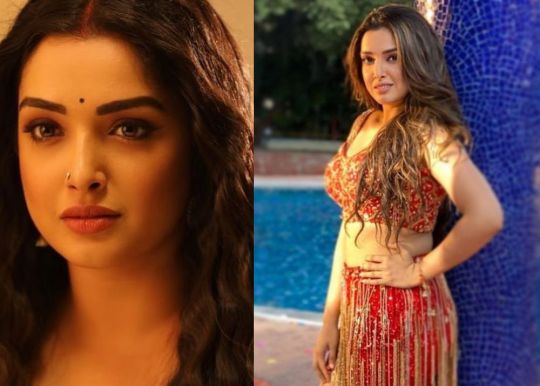
Aamrapali Dubey is an Indian actress who has appeared in many Bhojpuri films. Along with that, she has also done serials like Rehna hai Teri Palkon Ki Chhaon Mein, Saath Phere, Maayka, and Mera Naam Kregi Roshan. This Bhojpuri beauty is among the sexiest Bhojpuri actress.
3. Kajal Raghwani

This 32-year-old Bhojpuri actress has acted in many Bhojpuri films. She has also won the Bhojpuri best actress people choice award in 2016. Kajal has a fan following of 3.3 million on Instagram.
4. Akshara Singh

Akshara Singh is one of the highest-paid actresses in Bhojpuri cinema. Her beauty and charm are what make her fan’s heads turn. She started her career in 2016 and now she works as an actress, singer, dancer, and Tv presenter.
5. Rani Chatterjee
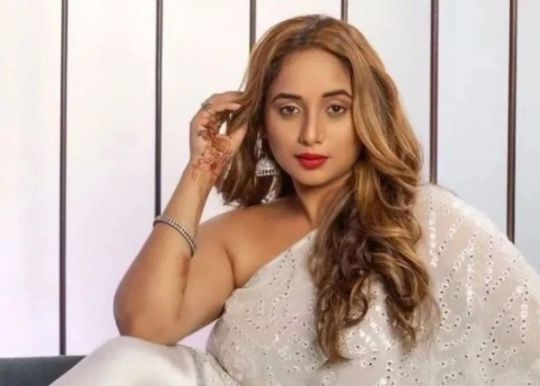
Born in 1976, Rani Chatterjee’s real name is Sabiha Shaikh. She is among the sexy bhojpuri actresses. Rani has appeared in many Bhojpuri movies and a web show named Mastram. Along with being a popular Indian actress, this Bhojpuri beauty is also a great dancer.
6. Namrita Malla

Namrita Malla is a Bhojpuri actress known for her fiery looks and amazing body. She has acted in many Bhojpuri films. Namrita was born in Mumbai, Maharashtra, and then shifted toward Bhojpuri cinema. This beautiful Bhojpuri diva is also an Instagram star.
7. Nidhi Jha
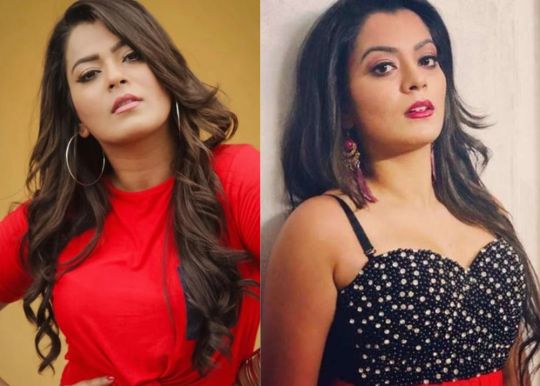
You must have known her from the popular serials, Balika Vadhu, Aahat, Sapne Suhane Ladakpan Ke, Addalat, crime petrol, Savdhan India, and many more. Along with being a popular tv actress Nidhi Jha is also a known face in Bhojpuri cinema too. She has acted and many Bhojpuri films and is also among the sexy Bhojpuri actresses.
8. Anjana Singh

Anjana Singh is a typical Bhojpuri beauty and a famous name in Bhojpuri cinema. Her movies and acting skills are what is admired by the fans most. This 32-year-old actress was born and brought up in Lakhnow, Uttar Pradesh.
9. Seema Singh
https://stackumbrella.com/wp-content/uploads/2023/04/9-1.jpg
Seema Singh is a great dancer and actress. She has appeared in more than 500 Bhojpuri movies. People also know this gorgeous diva as the ‘ item queen’ of Bhojpuri cinema. Her moves and dancing skills never fail to amaze her fans.
10. Mani Bhattacharya

Mani Bhattacharya is a beautiful and talented Bhojpuri actress. She has acted in many Bhojpuri and Bengali films. Mani has made her Bhojpuri film debut with ‘ Zila Champaran’. She is among the hottest Bhojpuri actress.
2 notes
·
View notes
Text
Players Who Smashed Fastest 50 In IPL! Bowlers Are On the Top
Players Who Smashed Fastest 50 In IPL! Bowlers Are On the Top
Fastest Fifty in IPL: All of us know that cricket is a game of endless possibilities, and when it comes to the Indian Premier League (IPL), we can’t say anything is impossible n it. Without any doubt, it is famous for its massive action and power-hitting. Over the year, we have seen various unbreakable records breaking.
But today, we are going to shed the spotlight on some of the fastest fifties in the Indian Premier League. Check the top 10 list down here:
Table of Contents
Top 10 Fastest Fifties In IPL
1. KL Rahul in 2018
2. Pat Cummins in 2022
3. Yusuf Pathan in 2014
4. Sunil Narine in 2017
5. Suresh Raina in 2014
6. Ishan Kishan in 2021
7. Chris Gayle in 2013
8. Hardik Pandya in 2019
9. Kieron Pollard in 2021
10. Adam Gilchrist in 2009
Top 10 Fastest Fifties In IPL
1. KL Rahul in 2018

On 8th April 2018, the former captain of Kings XI Punjab, KL Rahul smashed the fastest fifty in IPL history against Delhi Capitals. He scored the half-century in just 14 balls. It includes 10 boundaries, 6 fours and 4 sixes. The incident took place at IS Bindra Stadium, Punjab.
Also Read: Top 5 IPL Teams With Most Wins In the Tournament, Check Now
2. Pat Cummins in 2022
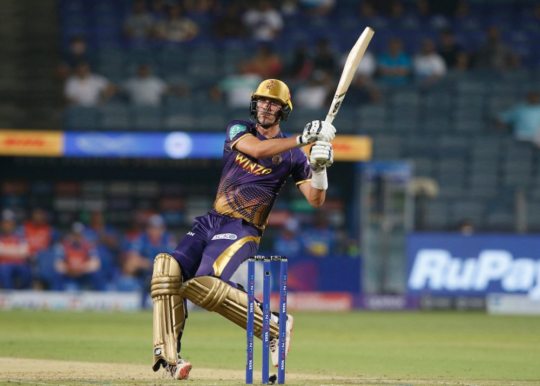
In the last season of IPL, Kolkata Knight Riders’ key bowler Pat Cummins played a match-winning inning against Mumbai Indians. In that match, he scored 56 runs in only 15 balls, including 4 fours and 6 sixes. However, he completed his half-century in just 14 balls.
3. Yusuf Pathan in 2014

Former cricketer Yusuf Pathan has also been one of the most important all-rounders for the Kolkata Knight Riders once. In 2014, he played a very contributing inning for his team, against Sunrisers Hyderabad.
In the match, he scored 72 runs in 22 balls with the help of 5 fours and 7 sixes. Although, Yusuf reached his 50 in just 15 balls. It was the fastest at that time.
Also Read: Players with Most Sixes in the History of IPL!! A Gap of a Century of Sixes Between the First Two Rank Holders!!
4. Sunil Narine in 2017

Suniel Narine is another player of Kolkata Knight Riders to hit a half-century in just 15 balls. In the IPL season in 2017, he was in the best form of his entire career. At that time, he used to open for his team.
In a match against Royal Challengers Bangalore, Narine scored 54 runs in 17 balls, including 6 fours and 4 sixes. The match took place in M. Chinnaswamy Stadium, Bangalore.
5. Suresh Raina in 2014
https://stackumbrella.com/wp-content/uploads/2023/04/match47-00498-1633189646-7.jpg
Chennai Super Kings vs Kings XI Punjab in 2014 is one of the most memorable matches in IPL history. In that match, Mr IPL Suresh Raina went off the mark to chase down the huge target of 231 against Kings XI Punjab.
Raina smashed 87 runs in only 25 balls. He was about to score the fastest century in cricket ever but got run out in between. He reached the half-century in just 16 balls. Talking of the boundaries, Mr IPL smashed 12 fours and 6 sixes.
Also Read: Mr IPL Suresh Raina Announced Retirement From All Formats, Watch his Great Innings Here
6. Ishan Kishan in 2021
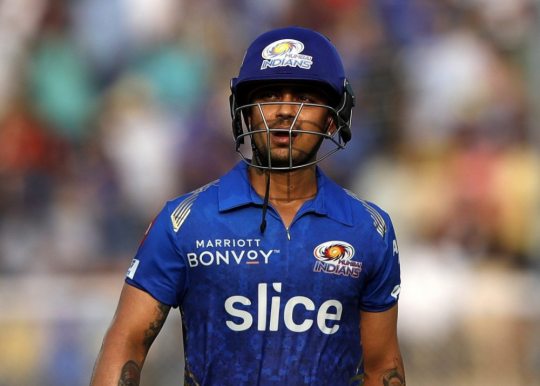
In a match against Sunrisers Hyderabad in 2021, young Indian batsman Ishan Kishan played an explosive inning for Mumbai Indians. He smashed 84 runs in just 32 balls in that inning. However, he completed his half-century in only 16 balls. Kishan smashed 11 fours and 4 sixes in that match. The match took place in Zayed Cricket Stadium, Abu Dhabi.
7. Chris Gayle in 2013
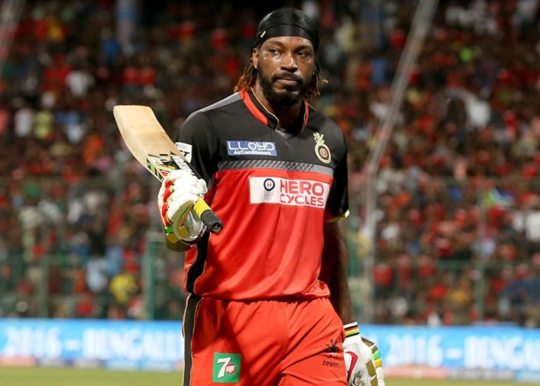
Undoubtedly, Universe Boss Chris Gayle is the biggest hitman of the IPL tournament. He played various match-winning innings for his former team Royal Challengers Bangalore.
In 2013, the cricketer broke all the records of the IPL by hitting 175 runs in 66 balls against Pune Warriors. It’s still a world record in twenty-over-limited cricket. In that match, he smashed 13 fours and 17 sixes. It also includes the fastest fifty of Chris Gayle, which he completed in only 17 balls.
Also Read: What Are the Highest Team Scores In IPL History? Click Here to Check the Top 10 List
8. Hardik Pandya in 2019

Gujarat Titans’ captain Hardik Pandya is another player who scored a half-century in just 17 balls. In a match against Kolkata Knight Riders in 2019, Hardik scored 91 runs in only 34 balls, including 6 fours and 9 sixes. At that time, he was playing for Mumbai Indians. The match took place in Eden Gardens, Kolkata.
9. Kieron Pollard in 2021

Another Mumbai Indians’ all-rounder Kieron Pollard is also one of the players who hit the fastest fifties in IPL. In 2021, the player scored 87 runs in 34 balls against Chennai Super Kings. In that inning, Pollard smashed 6 fours and 8 sixes. However, he reached fifty runs in just 17 balls.
10. Adam Gilchrist in 2009
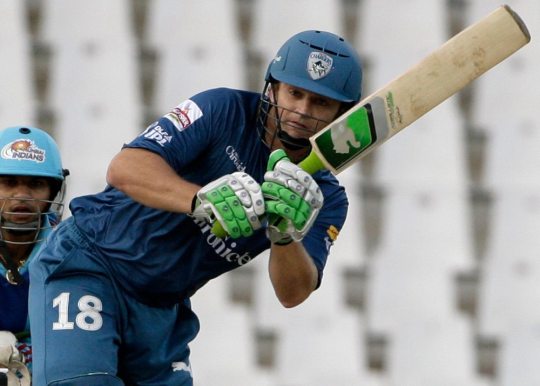
At last! Deccan Chargers’ former captain Adam Gilchrist also smashed a half-century in just 17 balls. In a match against Deccan Chargers in 2009, the cricketer scored 85 runs in just 35 balls, including 10 fours and 5 sixes. The match took place in Supersport park, South Africa.
We hope you like this list of the fastest fifty in IPL history. Stay tuned to Stackumbrella for topics like this.
1 note
·
View note
Text
2023 Most Powerful Indians List Released!! BJP Leaders and Billionaires Top the List!! Check Out…
2023 Most Powerful Indians List Released!! BJP Leaders and Billionaires Top the List!! Check Out…
Indian Express has released the list of 2023 most powerful Indians based on their status in the country. The list has arranged the most powerful Indians based on their influence in the country and the impact of their decisions and thoughts.
2023 Most Powerful Indians
Present Prime Minister of India, Narendra Modi tops the list based on his influence over the country’s growth ever since has held his position. The politician has not only managed to help the country grow but also made some very crucial decisions for national security.
Modi has slammed Pakistan several times now concerning their terrorist activities like Pulwama and Uri attacks. PM Modi managed to take decisions during such hard times of battle.
He also managed to recover India from the impact of Covid-19. It was not easy to constrict rules and regulations on a country with a humongous population of 1.3 billion. He somehow still survived to bring us all together and even supplied Covid vaccines to other countries as well.
2023 List of Most Powerful Indians (Top 10)
1.Narendra ModiPrime Ministe of India2.Amit ShahHome Minister3.S JaishankarMinister of External Affairs4.DY ChandrachudChief Justice of India5.Yogi AdityanathChief Minister, Uttar Pradesh6.Mohan BhagwatRSS Chief7.JP NaddaNational President, BJP8.Nirmala SitharamanFinance Minister9.Mukesh AmbaniIndian Businessman10.Ajit DovalNational Security Advisor
This list includes many other powerful decision-makers and Amit Shah that hold the second position in the 2023 most powerful person list. It is said that he was highly active in actions taken against Khalistan leaders trying to break the peace in Punjab.
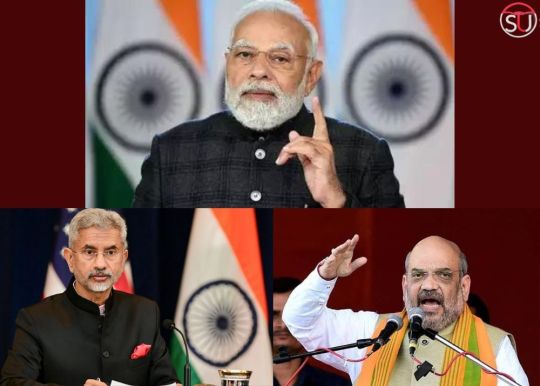
S Jaihankar follows Amit Shah in the third position. After him, in fourth position comes DY Chandrachud, Chief Justice of India who is a very important person for the country’s Supreme Court.
CM Yogianth for Uttar Pradesh holds the fifth position on this list. He is the only CM of any state within the top 10 2023 most powerful Indians list. He is followed by RSS Chief, Mohan Bhagwat. BJP President JP Nadda holds the seventh position on the list. Nadda’s role as National President for India was extended recently considering his importance during the upcoming Lok Sabha elections in 2024.
Nirmala Sitharaman holds the eighth position, the only women who made it into the top 10 2023 most powerful Indians. She currently serves as the Finance Minister of India. She recently presented the budget for the 2023-24 session during which her economic reforms regarding the income tax regime were widely appreciated across the country
The list of 2023 most powerful Indians also includes the multi-billionaire Mukesh Ambani. He is one of the greatest industrialists in the world and is responsible for maintaining the healthy economic growth of the country.
Ajit Doval also became a member of this 2023 most powerful Indians list holding the 10th position as his decisions have highly influenced the defense line of the country. He has forwarded influential decisions during the most sensitive situations.
0 notes
Text
Ready for The Solar Storm: NASA-Enabled AI System May Warn in Advance About Solar Storm
Ready for The Solar Storm: NASA-Enabled AI System May Warn in Advance About Solar Storm
The world is ready for tomorrow’s solar storm but where it hit it is still unknown.
But NASA is ready to detect the location, where the solar storm hit earlier. NASA built a new computer model that uses AI to analyze the spacecraft measurements of the solar wind and predict where an impending solar storm will strike, anywhere on earth, with 30 minutes of advance warning.
Solar Storm Devastating Impact on Technologies

The sun constantly sheds solar materials both in a steady flow known as the “solar wind” and in shorter more energetic bursts from solar eruptions.
When these solar materials hit the earth’s magnetic environment it creates so-called geomagnetic storms.
The geomagnetic storm causes disruption in technologies like satellites and telecommunications.
In history, there were two geomagnetic storms that hit the earth.
First – In 1859 the solar storm was intense at the Carrington Event, which generate fires at the TV Stations. If it happens today, it causes more severe damage to global communications and it would be dangerous for the economy as well.
Second – The second occurred in 1989 and caused electrical blackouts across Quebec for 12 hrs, which left millions of Canadians in the dark and closed schools and businesses.
Also Read: Will Earth Turn to Dust as it’s Getting Closer to Sun?
NASA Will Use AI-Enable Model to Provide Advance Warning of Solar Storm

NASA build the computer system Dagger (Deep Learning Geomagnetic Perturbation) that can quickly predict the Geostorm 30 minutes before they occur.
The model can produce predictions in less than a second and update about storms every minute.
Dagger computer model uses AI to analyze the real-time measurement from space and across the earth to generate accurate and precise predictions of the solar storm.
The dagger model was built by a team of researchers at the Frontier Development Lab – a public-private partnership that includes NASA, the U.S. Geological Survey, and the U.S. Department of Energy.
The researchers applied an A.I. method called “deep learning” which trains computers to recognize patterns based on previous examples. They used this type of AI to identify the relationship between solar wind measurements from Heliophysics missions and geomagnetic perturbations observed at ground stations across the planet.
The dagger model computer code is open source, and it could be used by power grid operators, satellite controllers, and telecommunications companies.
This model gives them an advance warning which helps them to prepare everything in advance before a solar storm hit the earth.

“With this AI, it is now possible to make rapid and accurate global predictions and inform decisions in the event of a solar storm, thereby minimizing – or even preventing – devastation to modern society,” said Vishal Upendran of the Inter-University Centre for Astronomy and Astrophysics in India.
0 notes
Text
Best Effective Summer Fruits to Relieve Constipation
Best Effective Summer Fruits to Relieve Constipation
An upset stomach may ruin your entire day. Summer is approaching, and stomach issues are fairly typical around this time. An unsettled stomach may have a negative impact on your mental health. Constipation, bloating, and acidity are some of the most common health issues in the summer.
High heat and an unhealthy lifestyle can both contribute to bad health. Constipation is the most prevalent issue. Constipation over an extended length of time, according to health professionals, can develop into larger issues such as fissures and piles.
If fecal matter is kept in your intestines for an extended period of time, it might cause health problems. The poison discharged by the fecal waste might also cause skin outbreaks. Hence, to be healthy and hydrated at this time of year, we must pay special attention to our nutrition.
Here are some of the healthy food that people must eat during summer to relieve constipation and also keep themselves hydrated. Also, look at these instant remedies to relieve constipation.
Summer fruits to eat during constipation
These summer fruits are high in both fiber and water content. This can assist with constipation and dehydration, two of summer’s most common symptoms. Scroll down to see what fruits you should consume this summer to stay healthy.
1. Apples

Constipation may be avoided by eating an apple every day. Because apples are abundant in fiber, they aid in the relief of digestive issues. Apples may also be a healthy snack option. Remember to eat the apple peel on.
2. Oranges

Oranges have several health advantages. Oranges provide vitamin C in addition to being high in fiber. Vitamin C functions as an antioxidant, which offers several advantages. Oranges must be consumed in the summer to alleviate digestive troubles.
3. Papaya

Adding papaya to your diet can help you relieve constipation. Make it your summer buddy to get rid of all your gut-related issues.
4. Black raisin

Soak black raisins in water overnight and eat them in the morning. It aids in the cleansing of your digestive tract. Also, read about these effective ways to get rid of bloating in the stomach.
0 notes
Text
Steal These Sara Ali Khan’s Gorgeous Ethnic Wardrobe Choices
Steal These Sara Ali Khan’s Gorgeous Ethnic Wardrobe Choices
Sara Ali khan is known or sometimes even trolled for her fashion choice. Her western attires are few times called to be influenced by Ranveer Singh. Even Karan Johar even made fun of this diva’s fashion style on Koffee with Karan.
Nonetheless, everyone is aware that Sara can never go wrong while wearing traditional clothing. On casual days, she always goes with what is comfortable. Sara frequently used Instagram to display her superb sense of ethnic style.
Look at these amazing 4 ethnic fashion attires of Sara Ali khan.
5 Times Sara Ali khan slayed in ethnic attire
instagram
Sara’s most recent Instagram photo is nothing short of a dreamy affair. With this pink lengha choli, she looks gorgeous. She makes the decision to take this stunning clothing from Punit Balana’s closet. Sara finished off her ensemble with a regal ring and gorgeous chokers.https://www.instagram.com/p/CppmMawIi-0/embed/captioned/?cr=1&v=14&wp=540&rd=https%3A%2F%2Fwww.stackumbrella.com&rp=%2Fsara-ali-khans-ethnic-wardrobe-choices%2F#%7B%22ci%22%3A1%2C%22os%22%3A2502.699999988079%2C%22ls%22%3A1429.8999999761581%2C%22le%22%3A2475.800000011921%7D
When Sara appeared in a stunning lengha choli during Lakme Fashion Week, she became Puneet Balana’s inspiration. She was extraordinarily stunning and blooming with beauty. She wore a maang tika and bangles to keep the list’s appearance simple.https://www.instagram.com/p/CpADAQgos1K/embed/captioned/?cr=1&v=14&wp=540&rd=https%3A%2F%2Fwww.stackumbrella.com&rp=%2Fsara-ali-khans-ethnic-wardrobe-choices%2F#%7B%22ci%22%3A2%2C%22os%22%3A2509.300000011921%2C%22ls%22%3A1429.8999999761581%2C%22le%22%3A2475.800000011921%7D
Sara donned a co-ord set with an all-white sharara with golden lashing and an identical shrug. The clothing looked stunning and would be ideal for any wedding-related event. She added a pair of flower-shaped stud earrings and little makeup to finish her outfit.https://www.instagram.com/p/CorQETlof-E/embed/captioned/?cr=1&v=14&wp=540&rd=https%3A%2F%2Fwww.stackumbrella.com&rp=%2Fsara-ali-khans-ethnic-wardrobe-choices%2F#%7B%22ci%22%3A3%2C%22os%22%3A4270.800000011921%2C%22ls%22%3A1429.8999999761581%2C%22le%22%3A2475.800000011921%7D
Sara was spotted wearing an exquisite white ethnic dress with lovely mirror work. She had the appearance of a true desi girl in videshi land. She posed at the Sydney Opera House in Australia wearing the ensemble and accompanying costume jewelry. Also, look at these Sabyasachi’s latest bridal collections for your wedding.
0 notes
Text
Best family-friendly destinations for your summer vacay
Best family-friendly destinations for your summer vacay
One of the most conventional human progress on the planet. India is a mosaic of multicultural encounters. With a rich legacy and a lot of attractions.
The nation is among the most well-comprehended travelers objections on the planet, reaching out from the snow-shrouded Himalayan levels to the tropical jungles of the south. Here are the best 9 family-friendly destinations for your summer vacay:
Best family-friendly destinations for your summer vacay: –
1. Nainital – The pearl of Uttarakhand
Roosted at an altitude of 2,084 meters above ocean level, the sparkling city of Nainital is encircled by seven slopes that are prominently known as ‘Sapta-Shring’ – Ayarpata, Deopata, Handi-Bandi, Naina, Alma, Lariya-Kanta and Sher-Ka-Danda. The magnificent mountains and the shining waters of the lake add an enormous parcel to the glamour of the town.
Naini Lake has seats for drifting, yachting, horse riding, skating, golf, and rock climbing. it is one of the Best family-friendly destinations for your summer vacay with the most mind-blowing places for a mid-year get-away in India, the city is a seriously famous slope station in Uttarakhand and is there any good reason why it shouldn’t be?! All things deemed, its regular excellence is qualified for softening hearts.
Read More: Want to Plan a Vacation in Summer? Here are the Top 10 Must Items for Your Travel
2. Ladakh – the coldest desert on the planet
Ladakh is known for its phenomenal mix of crazy deserts, blue waters, freezing winds, ice sheets, and sand rises. Best family-friendly destinations for your summer vacay and One of the most staggering spots for a pre-summer event in India, Ladakh is a region of India that is diverged from the state-of-the-art world. Such is the energy of this spot that you’ll unquestionably emerge as a changed person after your Ladakh visit.
The land might be vain yet it awakens with people here whose love for their domain and essential pleasures infuse the scene with life. Ladakh is parceled into two regions: district Leh and area Kargil. Every extent of the scene, every wonderful strict local area, and each charming region makes it an objective that is unmatched for what it offers of real value.
3. Delhi
With scores of museums, amusement parks, numerous monuments, scenic gardens, and infinite scope for fun, New Delhi is a must-visit. The capital of India results high when we talk about family holiday destinations in India. Best family-friendly destinations for your summer vacay as New Delhi houses three World Heritage Sites which are worth seeing during your family holidays here. Also, Lodhi Garden is one of the best sites to go picnicking with kids and families.

4. Haridwar – Gateway to God
The travel industry in Haridwar is burdened with love and rapture. Haridwar is also known as Ganga-Dwara because the sacred Ganges enters the fields here. Haridwar has not just stayed the house of the fatigued in body, psyche, and soul but has likewise filled in as a focal point of fascination for learning human expression, science, and culture.
Best family-friendly destinations for your summer vacay as the Haridwar has a well-established position as an incredible hotspot for Ayurvedic meds and natural cures. Among the first summer vacationer places in Quite a while that ring a bell, Haridwar is currently creating a complex social and profound focus. It is further known for its edibles and an amount of the must-attempt dishes including kachoris at Kashyap Kachoriwala and the aloo puri at Mohanji Puriwale.
5. Manali – The Endowment of the Himalayas to the World
It can never happen that you talk about summer camp and not mention Manali. In between the snow-shrouded inclinations of the Pir Panjal and the Dhauladhar ranges, a pre-summer trip outing to Manali is healing at its great. Best family-friendly destinations for your summer vacay there are No big threat the rising above tops and verdant regions of Manali attracts experience voyagers with heli-skiing, getting over, mountaineering, and stream drifting; absolute assistance for individuals who favor vigorous pursuits.

6. Tawang
Best family-friendly destinations for your summer vacay is The wonderful town of Tawang, likewise articulated as Dawang, has a dazzling landscape to make your excursion a beautiful and essential one. An abnormal yet exceptionally ideal summer vacation place in India.
Tawang is a spot that will complement you with its regular excellence enveloped by the fragrance of otherworldliness. The delightful orchid haven and the Tipi Orchid Asylum is also an optimal spot for your rundown of spots to visit. Alongside this, one can shiver their taste buds by enjoying the region’s one-of-a-kind cooking.
7. Coorg
Awaken to the smell of sedating espresso and partake in the rich vegetation of this well-known slope station of Karnataka. Best family-friendly destinations for your summer vacay has Set amid the excellence and serenity of slopes, vegetation, and profound valleys, Coorg is an ideal escape from the hurrying around of city life.
Coorg has countless open-air exercises on offer, for example, traveling, calculating, and wilderness boating, and significant celebrations like Keil Poldu (love of weapons), Cauvery Shankaramana (return of the stream goddess), and the Huttari (reap) celebration are an enormous draw.

8. Lonavala – Misty Weekend Getaway
Beguiling and mitigating at the same moment, Lonavala is a well-known slope station that is near Pune and Mumbai. Best family-friendly destinations for your summer vacay has heaps of cascades, lakes, and slopes around, Individuals from everywhere rush to this spot for a loosening-up time frame.
Presumably, the most ideal getaway spots in Lonavala are Lohagad Stronghold, Rajmachi Point, Karla Caverns, Valvan Dam, Lonavala Lake, Tiger’s Jump, Bhaja Caverns, Rajmachi Post, Bhushi Dam, Korigad Post, Kune Cascades, Tikona Fortress, Visapur Fortification, Bedsa Caverns, and Tung Fortress.
The people who wish to relax in the warm sun or appreciate recreational strolls investigating the spot, Lonavala is the right location for them. It offers the ideal retreat to city tenants through its serenity and tranquil air.
9. Rajasthan
When it arrives at the best family vacation destinations in India. Best family-friendly destinations for your summer vacay as Rajasthan probably tops the charts. The ‘Land of Maharajas’ leaves other areas behind in terms of foreign comings as well as household travelers. With its magnificent princely past, rich artistic heritage, and mighty regiments and palaces, Rajasthan is one of the top visitor destinations in India.
Some of the finest places to visit in Rajasthan are Jaisalmer, Jodhpur, ‘Pink City’ Jaipur, Ranthambore National Park, Pushkar, and Udaipur. Pacify the adrenalin rush with camel safaris in the dunes near Jodhpur and Jaisalmer and wildlife safari in Ranthambore.
Moreover, visiting the holy town of Pushkar along with Ajmer offers the desired bliss. Owing to the spectacular Pushkar Camel Fair, the town ranks amongst the best holiday goals in November. In addition, there is a ton of training that keeps even the fussiest of travelers on their toes. Separately each city in Rajasthan homes stupendous forts and palaces, and elegant havelis.
Conclusion
Go have a meeting for the best family-friendly destinations for your summer vacay. On the off chance that you have been on an Indian occasion for a long time and haven’t had the option to decide. Then, at that point, these suggestions are certainly going to make it more straightforward for you.
0 notes
Text
Maharana Pratap : The Story of India’s Bravest Son
Maharana Pratap : The Story of India’s Bravest Son
Rajputana history is filled with so much fearlessness and bravery, making it fascinating to study. Many fierce and holy warriors like Bappa Rawal, Rana Sangha, and Rana Hamir were born in the land of Mewar and were given the title ‘Rana’ but there was one holiest of the holy king who was bestowed with the title of ‘Maharana’.
And, that valiant, valorous, and chivalrous king was Pratap Singh or Rana Pratap. A renowned history professor in the book ‘Maharana Pratap’ has written a spirited account of Pratap Singh in which he glorified the undaunted king.
He said, “if courage was the distinguishing badge of the Rajputs, Pratap had more than his share of it; if the unflinching resolution and indomitable will ever be made a hero of a man, Pratap was one. If ever a man fought against fearful odds and pulled through them, it was he.”
Early Life and Accession to Throne

The Greatest King of Mewar Maharana Pratap was born on May 9, 1540, in Kumbhalgarh Fort of Rajasthan. He was the son of Rana Udai Singh and Rani Jeevant Kanwar. Husband of twenty-five royal consorts, Rana Udai Singh was the father of 25 legitimate sons.
Maharana Pratap was the eldest among twenty-five sons. Maharana Pratap was said to be 7 feet 5 inches tall, and weighing more than 110 kilograms. Udai Singh willed that Jagmal, his second son, from his favorite wife should succeed him. Jagmal was not known to possess any overwhelming merits. Udai Singh’s death had to be followed immediately by his successor.
The decision of Rana Udai Singh to allow Jagmal to succeed him came as a thunderbolt to the chiefs of the Mewar. Some of the chiefs resented it as an insult as they were not consulted. The followers of Mewar’s chief were with Maharana Pratap.
Maharana Pratap’s maternal uncle, Rao Akhai, Raja of Jhalor took the lead and after consulting Rawat Kishan Daas, Rawat Sangha, and Raja Ram Parshad, the deposed ruler of Gwalior made Jagmat vacate his royal seat.
Jagmal had not dared to disobey all these irreversible demands. The throne was now vacant and Pratap was proclaimed Rana. The chiefs paid in their customary ‘nasrana’ and the royal court resounded with cries of ‘Pratap Ro Jai’.
The accession to the throne of Mewar was not a bed of roses for Maharana Pratap. At that time, it was hard and stern responsibility upon the shoulders of Pratap.
Also Read : Contribution Made by Ancient Indian to Science and Technology You Never Knew !
The Trial
At that time Akbar became the Emperor of India. For Akbar, the problem of governing India was twofold:
First, the question of conquering the larger part of India and consolidating those conquests
Second, the method of governing India
Though, Akbar soon found the solution. He abolished the humiliating distinctions between his Hindu and Mohammedan subjects. His system of Mansabdars included Hindus also. Raja Todar Mal was one of the nine ratnas.
Raja Bhagwan Dass, Raja Man Singh, and Raja Ratan Singh of Bikaner were Akbar’s famous Generals. By offering lenient terms to the conquered and by allowing the Rajputs to retain their territories as fiefs from the Imperial government and by other generous measures, Akbar made it easier for the opponents to submit to him. But Akbar’s desire to expand imperialism came in a clash with Pratap’s firm decision not to submit before the Emporer. Maharana Pratap’s accession to the throne gave a tough challenge to Akbar’s expansionist ambitions. By 1572, Akbar had conquered a large part of India.
The defeat of Sikandar Shah had given him Punjab alone.
The battle of Panipat in 1556 put the Doab at his disposal.
Mewat and Alwar fell in 1557.
Jammu was also conquered and occupied in 1558.
Raja Ram Shah of Gwalior was dispossessed in 1559.
The first to submit to the Emperor was Raja Bhar Mal of Amber. In 1562 Raja Bhar Mal married his daughter, Jodha to Akbar. Jodha was the mother of Salim.In November 1570, Rao Chander Sen of Jodhpur, Rao Kalyan Mal of Bikaner, and Rao Udai Singh Rathor confirmed their submission by matrimonial alliances with Akbar. Of the Rajput rulers, the Rathors of Jodhpur and Bikaner, the Bhatis of Jesalmer, the Kachhwahas of Jaipur, the Deoras of Sarohi, the Hadas of Bundi, the Sisodias of Mewar had all been made the presence of the Great Ruler on the throne of Delhi.All these states except, Mewar, Bundi, and Sarohi confirmed their submission to the Emporer by matrimonial alliances. Rao Chander Sen of Jodhpur and Rao Surtan of Sarohi who were against Akbar at that time were dwindled down by the Imperial forces.
The Battle of HaldiGhati

On 18 June 1576, the Historic Battle of Haldighati was fought between Maharana Pratap and Akbar forces. Akbar’s army led by Man Singh was 2,00,000 soldiers while Pratap’s army was only 22,000 soldiers.
The presence of Maharana Pratap was a great encouragement to his soldiers and his heroic acts on that day were their inspiration. Maharana Pratap and his soldiers concentrated all their energies on the battle. They began to ply their swords and were using their spears as well.
Chetak’s Profound Loyalty
Maharana Pratap with his sword and spears had made a glorious day of it. One thing in the entire battle that had so much heart was when Rana Pratap’s horse Chetak jumped on the head of the elephant, mounted by Man Singh, and Pratap delivered his full blow.
However, Man Singh managed to save himself but his Mahaut (elephant) fell down dead. The small spear in the long trunk of the Mahuat pierced one foot of the Chetak.
The advantage of a number made the Mughals decidedly at a better stand. Maharana Pratap stood surrounded by all sides and was in no small danger. Pratap cut his way through and managed to leave the battlefield safely.
Chetak was also tired out and was all bruised. A 28 feet-long-running stream came in the way and Chetak crossed it over. After some time, Chetak fell down dead at his feet. This made Pratap weep like a young child.
Later, A beautiful garden was constructed by him in memory of Chetak.
The Death of Maharana Pratap
Maharana Pratap took his last breath on 29th January 1597 at the age of 56. He died of hunting after being hit by the lion on his chest due to which he was badly hurt and the wound inside his chest increased which gradually deteriorated his health. Men have shrunk back from the very thought of adversity; Maharana Pratap, a Prince among men, invited it. Comfort and luxury have been accepted by thousands of this world’s heroes, but Pratap scorned them when they had to be bought at the cost of his independence.
To read the stories in Hindi follow StackUmbrella.in
0 notes
Text
Summer Fashion: Top Tips To Blend Comfort and Style in Your Daily Outfits
Summer Fashion: Top Tips To Blend Comfort and Style in Your Daily Outfits
In summer Whether you are a stay-at-home person or a highly sociable person, or even better, a blend of both worlds – the dilemma of how to dress casually without losing the touch of comfort and style is something most of us face regularly.

1. Tank top
Tank tops are adaptable and agreeable and can be styled in various ways. It can be dressed up or down, depending on the occasion and the setting, with a jacket, blazer, or shrug.
A blazer can create a more formal appearance, while a denim or leather jacket can create a casual appearance. For an elegant appearance, wear a midi or maxi skirt with your tank top. A skirt with a floral or printed pattern can bring some color to the ensemble.
Also Read – Over-Coming Self-Doubt: Strategies for Building Confidence and Achieving Success

2. Flowy Summer kaftan dress
Dresses in kaftans that flow easily are best for summer days. The length you choose is up to you; either a shorter or a longer Kaftan dress with lots of flow. The options are endless and are ideal for a casual setting, whether you prefer bold prints, florals, or just solids.
You can style this outfit with simple accessories depending on the occasion. Opt for a dress with pastel floral prints, contrasting sandals, and a cute sling bag in contrasting colors.

3. Graphic shirt
A graphic shirt with fun and quirky messages is the ideal way to show off your summer style if you are one of those people who like everything bright and bold. To make an impression, you can choose a shirt that speaks to you through its colors, motifs, messages, or pattern.
When paired with a shirt and delicate accessories, colorful Palazzo pants, flared jeans, or ripped pants are in vogue and look stylish in summer days. Wear lower-leg lash shoes, sports shoes, or differentiating ballet dancers for footwear, and you will seem as though you have quite recently shown up on a tropical island for a truly necessary excursion

4. Pastel tunics
A basic top or tunic in a pastel color is a must-have in every wardrobe in summer days. They are really snappy and agreeable and can be worn in numerous ways – from morning espresso hurries to late-night grocery store visits and long stretch trips to night overs.
Contingent upon the event, you can decide on a dull shade of cotton or material jeans. You could also wear the tunic with well-fitted pants by tucking it in. Maintaining the casual nature of the ensemble, complete the look with white sneakers that are sporty.
Also Read – Parenting Tips: ऐसे बर्ताव से बच्चे हो जाते है नालायक, Parents ना करें ये गलतियाँ
0 notes
Text
Lesser Known Facts About India’s Role In The Cold War !!
Lesser Known Facts About India’s Role In The Cold War !!

Cold War: April 1961, a period when the leaders of the Union of Soviet Socialist Republics ( USSR) were concerned that the United States of America would invade communist-ruled Cuba and overthrow its president, Fidel Castro.Cuba was a supporter of the Soviet Union and received both financial and diplomatic aid from the Soviet Union. The then-leader of the Soviet Union, Nikita Khrushchev, decided to make Cuba as Russia’s base.In 1992, Nikita Khrushchev placed a nuclear missile in Cuba. The Americans became aware of it. John F. Kennedy, the USA President, was hesitant to do anything which could lead to full-scale nuclear war.
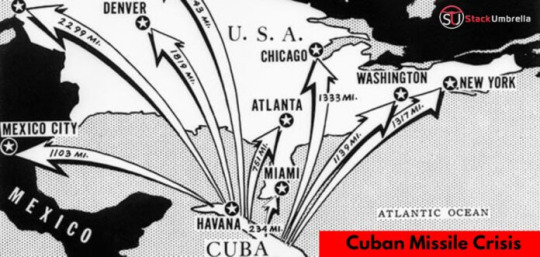
Kennedy was determined to remove the missiles and nuclear weapons from Cuba. This gave emergence to the clash between USA and USSR. The clash came to be known as the Cuban Missile. The Cuban Missile Crisis was the central reason for the Cold War.Also Read : Indian Economic Development (1950-1990) : How Indian Economy Progressed After IndependenceWhat was Cold War Exactly?
The Cold War was more of a competition between the two superpowers USA and the USSR. Fortunately, it never got escalated into a full-scale war. There was an ideological difference between the USA and the USSR.
The Western alliance which was headed by the USA represented capitalist ideology while the Eastern alliance, headed by the USSR followed the socialistic ideology.
Also Read : Explained : Challenges of Nation Building After India Got Independence
Two Power Blocs
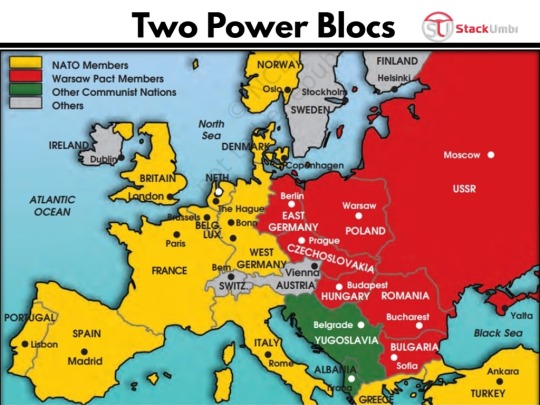
The world was sharply divided between the two power blocs, that is, the USA and the USSR. The USA and the Soviet Union were linked to their respective allies. The smaller States used to link to these two superpowers for their benefits and purposes. These smaller states got the promise of financial aid, weapons, and protection. Countries of Western Europe sided with the US and eastern Europe was with the Soviet Union. That’s why the two alliances were called the Eastern and the Western alliances.
The organization formed by the western alliance was known as the North Atlantic Treaty Organization (NATO). NATO came into existence in April 1949.
The eastern alliance was known as the Warsaw Pact, led by the Soviet Union. It was formed in 1955.
Non-Aligned Movement
Cold War: Countries outside the two superpower blocs, known as the non-aligned countries played a crucial role in reducing the Cold War conflicts. Jawaharlal Nehru was one of the key leaders of the Non-Aligned Movement.
The three leaders – India’s Jawaharlal Nehru, Yugoslavia’s leader Josip Broz and Egypt’s leader Gamal Abdel Naseer held a meeting in 1956. Sukarno, leader of Indonesia and Ghana’s chief Kwame Nkrumah strongly supported the above three leaders. These five leaders were the founders of NAM.
The first Non-Aligned summit was held in 1961 in Belgrade and was attended by 25 member states. Non-Alignment Movement grew into a popular International movement.
Also Read : Economic Impact of British Rule in India – From Largest Exporter of Cotton Goods to an Importer of British Cotton Products
New International Economic Order
Most of the non-aligned countries were the Least Developed Countries (LDCs). Economic Development was necessary for the independence of the new countries. Without economic development and growth, these countries would have not been truly free. Therefore, the idea of a New International Economic Order (NIEO) originated.
The United Nations Conference on Trade and Development (UNCTAD) put forth a report, entitled “Towards a New Trade Policy for Development”. This report was submitted in 1972. The report proposed reform in the global trading system. The proposals were:-
Give LDC control over their natural resources which were earlier exploited by the developed Western countries.
Obtain access to LDCs in Western markets so that they could sell their products without any kind of restrictions
Reduce the costs of technology acquisition from Western countries.
Provide a greater role to LDCs in International economic institutions
Gradually, NAM became an economic pressure group.
India and the Cold War
India’s stand on the ongoing Cold War was two-fold
To stay away from the two alliances
To raise a voice against the newly independent country to join any of these alliances.
Jawaharlal Nehru’s non-aligned stance helped India in two ways
First, it allowed India to take International decisions for itself that served its interests.
Second, India could keep the balance between both superpowers. If India felt unduly pressured by one superpower then it could tilt towards the other. Neither of the alliance systems could take India for granted.
In the context of the Cold War, NAM contained some essence. It came out as the core of India’s effective foreign policy. NAM also encouraged the newly decolonized countries to pursue their independent foreign and geo-economic policy.
Also Read : 10 Facts About Vishwas Swaroopam Statue Every Shiv Bhakt Must Know
1 note
·
View note
Text
Indian Economic Development (1950-1990) : How Indian Economy Progressed After Independence
Indian Economic Development (1950-1990) : How Indian Economy Progressed After Independence
Indian Economic Development : 15 August 1947, A new dawn of freedom for India. Finally, India became the master of its fate after two hundred years of British colonialism. The job of nation-building was in our leaders’ hands.
Leaders of the newly independent India had to decide what type of economic system would be suitable for the country to promote the well-being of all. There are different types of economic systems like capitalist society, socialist society, and mixed economy. Among them, Jawaharlal Nehru preferred Socialism.
However, Nehru was not in favor of the kind of socialism which was prevalent in the Soviet Union where all the means of production were owned solely by the government. There was no private property.
Though the government of a democratic country like India couldn’t change the ownership pattern of land and other properties of the citizens.
The leadership of the newly independent India found an alternative to an extreme version of socialism and capitalism. India being tilted toward the socialist outlook sought to be a socialistic society with a strong public sector but also a private sector.
In this view, the Indian government set up the Planning Commission with Prime Minister as its Chairperson. Since then the era of the Five Year Plans had begun.
Indian Economic Development : Goals of Five-Year Plans

The goals of the five-year plan were :
Growth: It refers to increasing the capacity of the country to produce the output of goods and services within the country.
Modernization: Modernization includes the use of new technology as well as changes in social outlook such as equal rights for women.
Self-reliance: The first five-year plan emphasized self-reliance by avoiding imports and producing goods by itself
Equity: It is important to ensure that the benefits of economic wealth reach the backward and needy sections of society as well. So with growth, modernization, and self-reliance, equity is also essential.
Let’s see the first seven first five-year plans, which cover the period from 1950-1990.
Agriculture
Indian Economic Development : During British rule, there was no growth in the agricultural sector. Nor any equity in the agricultural sector. Independent India had to tackle these issues. So, the government made Land reforms. The low productivity in the agricultural sector forced India to import food from the USA.
Land Reforms: Equity in agriculture called for land reforms. During the pre-independence era land tenure system was characterized by intermediaries called zamindars who collected rent from actual tillers without contributing towards the improvements in the productivity of the land. Land reforms primarily refer to changes in land ownership. Steps were taken to abolish the intermediaries and to make tillers the land owner.
Land Ceiling: It meant fixing the maximum size of the land which could be owned by an individual. The purpose of the land ceiling was to lessen the ownership of land to a few hands.
However, the land ceiling legislation also faced hurdles from big landlords as they challenged the legislation in the courts which delayed its implementation. Though, land reforms were successfully implemented in Kerela and West Bengal.
The Green Revolution: Spread of green revolution technology made India capable of achieving self-sufficiency in food grains. The large increase in the production of food grains was from the use of High Yielding Variety ( HYV) seeds, especially for rice and wheat. The use of these seeds required the use of pesticides and fertilizers in the correct quantities and a regular supply of water too.
https://stackumbrella.com/wp-content/uploads/2023/03/agrrrrr-1-2048x1365.jpg
The nation benefitted immensely from the green revolution. The government also provided loans to small farmers and gave subsidies on fertilizers so that small farmers could have access to resources.
By the late 1960s, the agricultural productivity of India had also increased. This was a great achievement. On the other hand, if we look at the negative side, 65% of the country’s population continued to be employed in agriculture till 1990.
Also Read : Explained : Challenges of Nation Building After India Got Independence
Industry
Indian Economic Development : At the time of independence, the industrialists of India had no capital for investment. The market was also not big enough to encourage industrialists to take on any major projects even if they had the capital to do so. And, due to these reasons, the state had to play an important role in promoting the industrial sector.
Industrial Policy Resolution 1956 (IPR 1956)
Indian Economic Development : IPR 1956 was the basis for India’s second Five-year plan. This plan was more on the Socialist pattern. IPR 1956 resolution classified industries into three categories.
First, the category comprising industries that were exclusively owned by the state
Second, the category comprising industries in which the private sector was supplementary to the state sector, in which the state took the sole responsibility to start new units
Third, the category consisting of the remaining private-sector industries
No new industries were allowed to be set up unless the license was obtained by the government. This policy was in existence to promote the industries in the backward region. The real purpose was to promote regional equality.
Effects of Policies on Industrial Development
Indian Economic Development : India had an impressive accomplishment during the first seven plans. The proportion of GDP contribution by the industrial sector increased from 11.8 percent in 1950-51 to 24.6 percent in 1990-91.
Indian industries were no longer restricted to cotton textiles and jute. The industrial sector had become diversified by 1990. Protection from foreign competition enabled the flourishing of indigenous industries. Though several economists pointed out some drawbacks too.
Economists pointed out that the need to obtain a license for starting the industry was misused by big industrialists
The protection from foreign competition industries was also criticized. Due to restrictions on imports, Indian consumers had to buy whatever the Indian producers produced regardless of the quality.
Excessive state regulation prevented the growth of Indian entrepreneurs.
Protection from foreign competition led to the low quality of goods that were produced.
The need for reforms in Indian Economy was required in the context of the global economic scenario and this gave the policymakers incentives to initiate the new economic policies in 1991.
Also Read : Sarojini Naidu
0 notes
Text
Explained : Challenges of Nation Building After India Got Independence
Explained : Challenges of Nation Building After India Got Independence

Challenges of Nation Building : On 14-15 August, at midnight, India attained Independence. The first Prime Minister of Free India, Jawaharlal Nehru, addressed a special session of the Constituent Assembly that night.
This was the moment every Indian, at that time, was waiting for. You must have read in your history textbooks and been taught by the teachers about the various national movements. There were many voices, and opinions of different revolutionaries during the movements but there were two definite goals on which almost everyone agreed,
One, that after independence, the country shall run through democratic government and,
Two, that the government will run for the good of all the citizens, particularly the poor and the socially backward and disadvantaged groups.
Though this was not going to be easy, since India was born in very tough circumstances. No other nation was born in such a difficult situation as India was in 1947.
Freedom came with the partition of the country. 1947 was a year of violence and unprecedented turmoil. At that time, the leaders had to face multiple challenges to shape the nation.
Also Read : Economic Impact of British Rule in India – From Largest Exporter of Cotton Goods to an Importer of British Cotton Products
The Major Challenges of Nation Building
The first and immediate challenge was to shape a nation that was full of diversity. India is a land full of diversity. People speak different languages and follow different cultures and religions and at that time it was widely believed that a country full of such kinds of diversity could not remain longer together.
There were serious questions regarding the country’s future, Would India survive as a unified country? How the integration of the territories of India would be achieved? How did Independent India respond to these challenges? To what extent India succeeded in achieving the various objectives set out by the Constitution?
Partition: Displacement and Rehabilitation
Challenges of Nation Building : On the day of Independence, that is, on 14-15 August, two nation-states came into existence – India and Pakistan. According to the ‘Two nations theory’, India consisted of two ‘people’, Hindus and Muslims. The two-nation theory was advanced by the Muslim League. And, because of this theory, they demanded Pakistan, a separate country for the Muslims.
Partition Process
This idea might appear simple but it was accompanied by all sorts of difficulties.
First, there was no single area of the Muslim majority in British India. These were two different areas where the majority of the Muslim population was concentrated, one in the East and one in the west. These two parts could never be joined. So, it was decided that Pakistan would comprise two regions, which are West and East Pakistan.
Second, not all Muslim areas wanted to be in Pakistan. Khan Abdul Gaffar Khan, known as the Frontier Gandhi was completely opposed to the two nations theory. Though, his voice was ignored.
Third, the two Muslim-majority provinces of British India, Punjab, and Bengal had large areas where the non-Muslims were in majority.
Fourth, There was a problem of ‘minorities’ on both sides of the boundary. Lakhs number of Hindus and Sikhs in Pakistan and an equally large number of Muslims in India found themselves entangled.
Consequences of Partition
Cities like Amritsar and Lahore were considered Communal zones. People went through immense suffering. Minorities on both sides of the border had to flee from their home and secured themselves in refugee camps.
Also Read : Contribution Made by Ancient Indian to Science and Technology You Never Knew !
Integration of Princely States
https://stackumbrella.com/wp-content/uploads/2023/03/integration-of-princely-states-self-study-history.jpg
Just before the independence, it was announced that by the end of British rule, all the Princely States would become legally independent. The British government took the view that the princely states are free to join either India or Pakistan or remain independent if they wish. This was a
Since then the problem started. There was a serious problem that could threaten the very existence of a united India. Firstly, the ruler of Travancore announced that they had decided to remain independent. The Nizam of Hyderabad and Nawab of Bhopal furthermore announced the same decision.
Government’s Approach Towards The Issue

The rulers of most of the states signed a document called the Instrument of Accession, through which the states agreed to become the part of Indian Union. The Princely States of Junagadh, Kashmir, Hyderabad, and Manipur proved more difficult than the rest to become the part of Union of India.
Junagarh’s issue was then resolved after a plebiscite which confirmed the citizen’s desire to join India.
Also Read : Paying Tribute To Sardar Vallabhbhai Patel
Hyderabad
Challenges of Nation Building : In Hyderabad, the peasantry class was the victim of Nizam’s oppressive rule, and they rose against him. The people of Hyderabad joined a movement in large numbers, including women, against the Nizam.
The Nizam retaliated by unleashing a paramilitary force known as Razakars on the people. The Razakars murdered people, raped women, and looted the public. Finally, in 1948, the Indian government ordered Indian Army to tackle the situation.
The army took control of Nizam’s forces. Nizam eventually had to surrender. This led to the accession of Hyderabad to India.
Manipur
Challenges of Nation Building : The Maharaja of Manipur Bodhachandra Singh signed the Instrument of Accession with the Indian government with the condition of having internal autonomy.
In September 1949, the Government of India succeeded in pressurizing the Maharaja into signing a Merger Agreement.
Reorganization of States
Challenges of Nation Building : Integration of princely states was one of the processes of nation-building. The other challenge was to draw internal boundaries for the Indian States. The boundary was to be drawn in such a way that linguistic diversity could be reflected without affecting the unity of the nation.
After partition, the leaders felt that setting boundaries based on languages might lead to separatism and disruption. The government decided to postpone the matter.
This decision of national leaders was challenged by Telugu-speaking areas of present-day Tamil Nadu, parts of Andhra Pradesh, Kerela, and Karnataka. They protested for a separate Andhra.
The movement for separate Andhra was called the Vishalandhra movement. The movement gathered momentum and Congress leader Potti Sriramulu went on an indefinite fast that led to his death. This resulted in violent outbursts and finally, the Prime Minister announced the formation of a separate Andhra state in 1952.
The protest for the formation of the states on a linguistic basis also got spread in other parts of the country. The protests forced the government to appoint State Reorganization Commission and the commission in its report accepted the creation of States on a linguistic basis. The State Reorganization Act was passed in 1956 and this led to the formation of 14 States and 6 union territories.
The creation of States on a linguistic basis was found to be more democratic.
Also Read : Horse Power
0 notes
Text
Bedroom Decor Tips and Tricks
Bedroom Decor Tips to make the best use of your room space
Avoid building lofts to save room space. You can also select lighter and muted color palettes to increase lighting. Also, using wooden furniture gives your room a cosier look. In addition, incorporating multi functional furniture, such as a storage ottoman or a foldable table, can also help maximize space. Another tip is to hang mirrors strategically to create an illusion of a larger room.
Try opting for affordable decorative ideas for bedroom decor without investing too much money. For instance, choose decorating your room with heavy wallpaper instead of texture paint. Another affordable idea is to add a statement piece like a colorful rug or a unique piece of artwork that can add character to your bedroom without breaking the bank.
One of the popular ideas for millennials is introducing a lot of grey shades in your bedroom decor. Grey color can be added with little black highlights and white color ceilings to avoid the look of the room as dull and dark. This trend is not only popular among millennials but also in the interior design industry. Grey shades are versatile and can create a calming and sophisticated atmosphere in any room.
Include a lot of bright and happy colors to make you feel cheerful and energetic compared to the muted colors. Research has shown that colors can have a significant impact on our mood and emotions. Adding bright and happy colors to your environment can help improve your overall well-being and increase productivity.
Adding vintage furniture in your bedroom decor is both a refreshing and creative idea. As wood is considered a vastu friendly material for your home space, traditional or old furniture pieces is a reasonable yet aesthetic option.
Heavy storage units take up too much space in small rooms. This describes the importance of small room decor ideas. Hence, innovative space-saving ideas to combat free-space issues are the most apt solution for every family situation.
The inclusion of mirrors in your bedroom amplifies light in the room and makes it appear larger. Mirrors can also be used to create an illusion of depth in the room by reflecting objects at different angles, which adds a visual interest to the space. Additionally, they can serve as a decorative element that complements the overall design of the bedroom.
If you have a small bedroom, hydraulic beds are great for your bedroom interior and space. Hydraulic beds make best use of the space, converting it into storage space.
Instead of opting for one color palette, try choosing different color options. Play with both light and dark shades to add fun and flavor to your room space.
A stunning and elite art wall piece adds personalisation to your room and brings out beauty to the texture. Not only does it serve as a conversation starter, but it also reflects your taste and style in art, making your space feel more unique and special. Adding an art wall piece can also elevate the overall aesthetic of your room, creating a more sophisticated and elegant atmosphere.
Visit stackumbrella.com for more informative and useful content.
0 notes